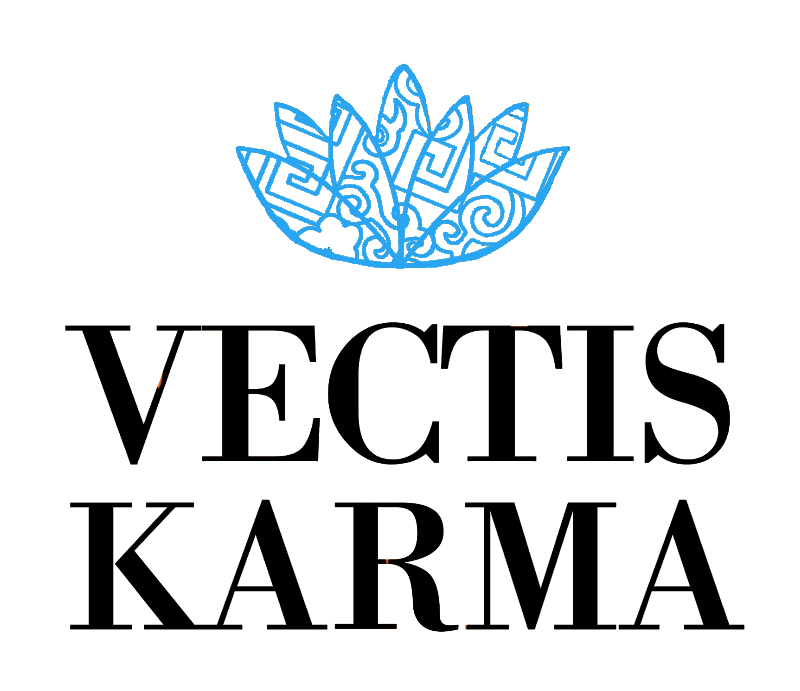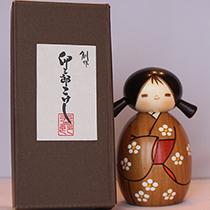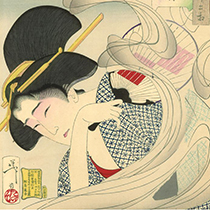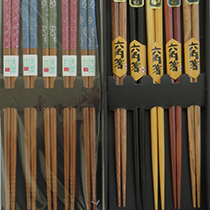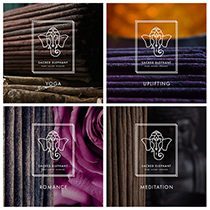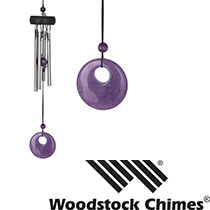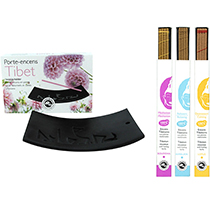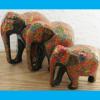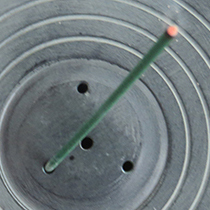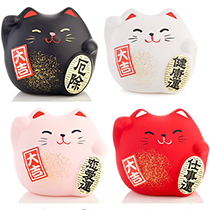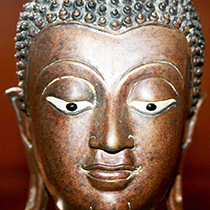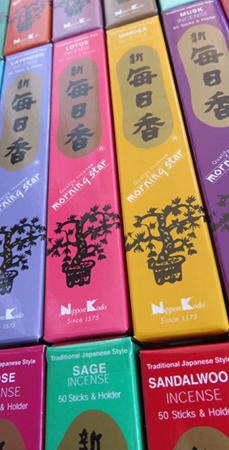Incense in general and common styles of Incense Sticks
The burning of singular raw materials, for their aromatic qualities, is where the Incense market started many thousands of years ago. This took place widely throughout the world, including the Mediterranean region (Greeks and Romans), Arabia, China and Japan. And for a variety of purposes including religious, aesthetic, therapeutic and practical. Common materials in this sense would be Frankincense, Myrrh, Sandalwood and Aloeswood, plus floral and herbal materials such as Rose and Sage. Incense in a stick format is a relatively more recent invention; hundreds of years, rather than thousands. This has made burning and appreciating incense easier, quicker and less expensive. It also enabled Incense masters to create sophisticated blends of aromatic materials - giving us the blended and complex fragrances we now get, particularly in Japanese Incense, but also with Luxury Indian Incense Sticks. 2 Base materials All stick Incense (Japanese, Indian, Tibetan etc.) use a variety of base materials - otherwise you'd be burning singular raw materials such as aromatic wood pieces, flower petals or essential oils as mentioned above. The Base both acts as a binder for the aromatic materials and fuels the Incense to burn with a self-sustained ember, rather than a flame, as with candles. Base materials are chosen carefully so that they do not overtly effect the aromatic qualities of the stick. Most commonly, for the combustible elements, they will be materials such as Charcoal* and/or wood powders. The binding agents keeps its form in shape and binds all the ingredients together. Various gums are used such as Gum Arabic, Gum Dammar and Gum Tragacanth. In the case of dry aromatic materials, these are combined into the base prior to forming the sticks (processes vary by country). When adding wet ingredients such as essential oils, this is done after the stick has been formed, and will be done by hand in the higher-end range, dipped at the lower and cheap end. An alternative to Charcoal is Makko, again used by the Japanese, which performs both functions of combustible material and binding agent. It’s sourced from Machilus Thunbergii trees, native to many countries in SE Asia. Considered organic and more ‘friendly’, Makko is used in the highest grades of Japanese Incense. *Noting Charcoal in more detail, various grades are used and these will directly affect the levels of smoke produced when the Incense Stick is burning. The Japanese have developed many low and even no-smoke Incense Sticks, using high-grade charcoal. Japanese Binchō-tan charcoal, sourced from Ubame Oak trees, is considered to be the best charcoal available. Burning at lower than normal temperatures, it produces very low levels of smoke when burning and does not release unpleasant odours. Comparisons between Japanese, Indian and Tibetan/Nepalese Incense SticksJapanese Incense Sticks Immediately discernable from other countries sticks by their lack of wooden core, being of pure base/aromatic materials, and usually of shorter length. Made by combining all the base and aromatic materials together and mixed in water to form a paste. This is then extruded, cut to the required length and dried into self-supporting sticks. Japanese Incense masters prefer the use of dry aromatic materials, so use much less essential oil than that from Indian sources. Hence, from a fragrance/potency angle they tend to be more delicate and sophisticated. The choice/availability of fragrance type is vast – including woody, herbal, floral, fruity, spicy and combinations of all these. To give good coverage across this mix we stock over 250 types of Japanese Incense and feature all 3 of Japan’s top Incense manufacturers – Nippon Kodo, Shoyeido and Baieido, plus some others. As for price, there are huge variances in Japanese Incense prices – we sell Japanese Incense Sticks from £3.50 up to around £90.00. Click here to browse our Japanese Incense. The Japanese raised Incense burning to a high cultural status where Koh-Do (the art of the Japanese Incense Ceremony or ‘Listening to Incense’) is considered on the same level as Shodo (Japanese Calligraphy), Ikebana (Flower Arranging) or Sado (Japanese Tea Ceremony). During Koh-Do aromatic materials are burnt on specially arranged sand over burning charcoal, and tend to be singular sourced items such as raw Aloeswood, Sandalwood etc. This takes a good deal of time and involves much practice and knowledge to participate and appreciate the nuances of raw aromatic materials. Indian Incense Sticks Indian Incense has been called a ‘Marmite’ choice – you love them or hate them, with little in between. Don’t be too closed minded though, if not already a fan. Trying high-quality Indian sticks may change your opinion forever – it certainly has in our family in the past couple of years. As for price, generally, even at the highest quality end, Indian Incense tends to sell at a lower price than that from, especially, Japan, but also Tibet and Nepal. In contrast to Japanese sticks (above) they are made by rolling a paste of base/aromatic materials around a bamboo stick core. Some of these will also have essential oils added as a further process. You can read more in detail about Indian Incense in our page here – summarised by ‘buyer beware’! There are many cheap Indian products available, who’s source ingredients or provenance are unknown. Our advice is to focus on Luxury Indian Incense Sticks, where per stick price is still under 40 pence each, so offers great value for money, with peace of mind. We only sell at the higher end – See our full Indian Incense range here. Tibetan/Nepalese Incense Sticks Mentioned together, as (for political reasons) Tibetan Incense is mostly made by Tibetans who have been exiled to Nepal and Northern India. This type of Incense is thicker than Japanese, has no inner stick or core and is usually limited to the more woody/herbal fragrances. You may browse our Tibetan Incense here.  Last words on choosing Incense … As far as personal preferences go, it’s very much an emphasis on ‘personal preference’. Some only like dark/woody fragrances, others, the pure and high florals are their only taste. The choice is vast and ultimately you should consider what fragrance/style you enjoy and what you’re prepared to pay for it. As your interest develops and/or gets more sophisticated you should pay closer attention to the ingredient types and their sources. Aloeswood at the highest end of wood ingredients is a great example – the source country will determine its base ‘taste’ or primary characteristic. We have written an article about Aloeswood on our site. Keep an eye out on our BLOG too - here we publish Incense information as well as product availability news. |
